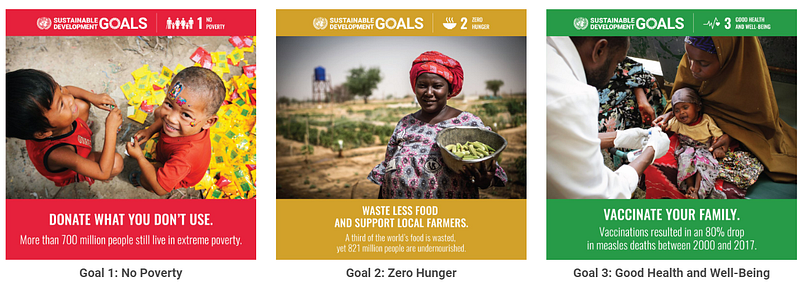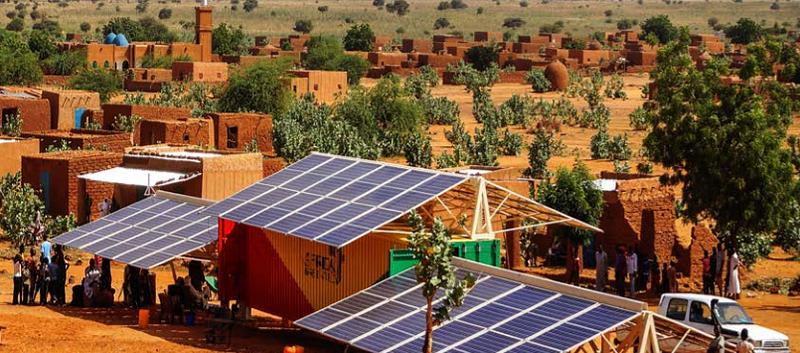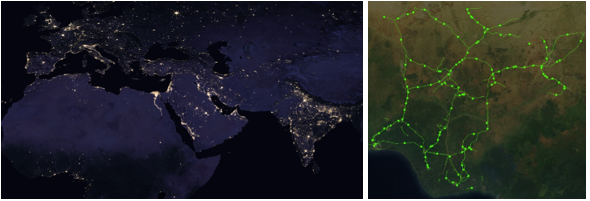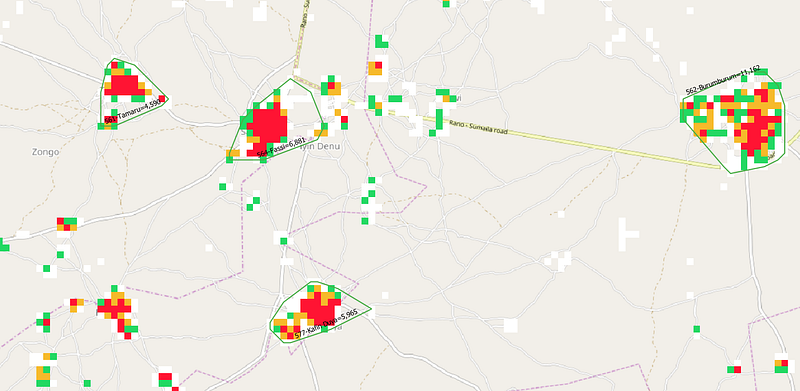AI Applied: Providing Communities in Nigeria With Solar Energy
March 9, 2020

Giving access to renewable energy in places most in need has the potential to solve many of the most pressing problems in today’s world.

The UN has identified a number of goals to make the world a better place.
The power of building AI through collaboration
Imagine if we could focus our AI efforts to help solve the biggest problems in the world — Poverty, Hunger, Health, Education.
As you are reading this you are probably interested in AI. Perhaps like myself you have completed courses in machine learning; put inordinate effort into a Kaggle project to reach the top 50; made hobby projects to generate twitter posts in the style of Trump or to tell the difference between an elephant and a giraffe. Perhaps you have a career in data science targeting advertising or building a chatbot for customer service.
And perhaps like me, you find these intellectually stimulating but that something is missing.
Surely there is a way to use AI to make a more positive impact on the world?
I recently joined an Omdena Challenge with a multi-national team to do just that. In the two-month AI challenge, hosted with Nigeria based NGO Renewable Africa, we focused on providing affordable, clean energy, which is a fundamental need in developing countries.
The problem: 100m people without electricity
Nigeria has a population of 200m people yet only half have access to electricity. Without electricity, there are no computers or the internet. There are no fridges to keep food fresh. There is no electric water pump. There is nowhere to charge a mobile phone.
Schools and Hospitals struggle to provide basic services. Widening electricity access is an essential first step for improving education, healthcare, and local economies.
Centralized planning for electricity in Nigeria has failed. The government has built-in failure by fixing prices and profits; there is widespread corruption, and banks will not lend to new power plants. Meanwhile, half the existing plants lie idle and the rest operate below capacity.
Millions live under the grid but not connected to it; previously connected but some equipment failed and has not been replaced, or they have electricity but only enough for a light bulb; or they have it but it is unreliable due to daily power cuts.
Can AI help to make a difference in Nigeria?
The solution

One solution to this problem is localized, off-grid, renewable energy in the form of solar panels servicing small communities of up to 4,000 people. This protects against any single point of failure; puts the power in the hands of local people; and is more easily financed as it requires less capital and has faster returns.
The first step in implementing this is to prioritize where to put the panels. It would take 25K+ panels to provide a minimal electricity supply to everyone in Nigeria. We can apply data science to ensure the available funding is used efficiently to provide electricity to as many people as possible.
AI in Nigeria: Overcoming challenges
A major part of the challenge is to find the data; validate it, and label it. There is no shortage of data but what is out there was not always accurate or fit for our purpose.
Other challenges were to develop skills in analyzing geographic sources that were at varying resolutions and to find ways to present these in a simple way.
Nobody on the project had strong prior experience in these areas so it was a learning experience. Modeling was less of an issue for this project because there were many existing models that we could adapt to. Some of the data issues are described below.
Identifying the demand
Nigeria can be split into 775 census areas but it is a huge country so a single census area can be 1000km2. In that area, we need to know if the people are all in one town or scattered across hundreds of villages. The typical way to do this is to use satellite images to classify land use then allocate the census numbers to buildings by applying estimates of relative density. This can be enhanced with random forest to incorporate a multitude of other variables.
It sounds great in theory but in practice, the numbers just look wrong.
Furthermore, there is a question mark over the accuracy of the census. This is used by the central government to allocate funding so there is some incentive for local officials to boost the numbers. We can’t even rely on the total population being 200m in total for the same reason! At best this is an estimate and at the local level could be completely wrong.
The solution
A recent healthcare project found that none of these models worked on the ground. So they created a new, bottom-up, statistical model based on areas where they knew the population; then expanded this via micro-surveys.
This looks much more realistic.
Where to supply the electricity?

Satellite images show the existing electricity. The grid has been mapped using machine learning.
To find target sites we need to exclude those that already have electricity. In addition, those close to the grid were given low priority as they are more likely to receive it directly in the future. The volume of available and free satellite data is incredible. In particular there are night-time light images that clearly show towns that have light.
But how do we validate that? Here we can leverage the magic of google maps. I find it awesome to be able to zoom in on a road in Nigeria to see whether it has street lamps. Based on a selection of test towns it was possible to calibrate and validate the data from satellite images.
For the electricity grid, you may think the government and electricity companies would know where their cables are. But they don’t!
Fortunately, we could leverage an existing model to identify electricity cables that used a combination of machine learning on satellite images and human checking.
Perfect!
Our outputs

Clusters of 4,000 people without electricity and more than 15km from the grid
Cluster analysis was applied to the population data to identify groups of 4,000+ people within a small radius filtering out those that already
had electricity or were close to the existing grid.
These candidate clusters were then combined with other data such as a solar irradiance model, health and education establishments. This produced a map showing potential sites together with a spreadsheet ranking the opportunities.
The map + technical explanation can be found here.
Benefits
The sponsoring NGO Renewable Africa is now able to confidently survey a selection of sites that are suitable for solar panels. In addition, they are sharing the data with the Nigeria Renewable Energy Agency (REA). The REA is a major funding source for off-grid, rural electrification projects in Nigeria. The data collected will allow much better targeting especially outside major towns where government data is lacking.
More refined targeting will enable many more people to get electricity per $ of investment.
This means better healthcare, education and economies; and will potentially improve the quality of life for millions of people.
For the project team, this was an amazing opportunity to learn more about Nigeria, AI, renewable energy, satellite imagery, population modeling, and technical skills in mapping and analyzing geographic data.
Most satisfying was using AI to solve a real problem affecting real people. AI is not about models but about solving problems.
This article is written by Simon Mackenzie.




